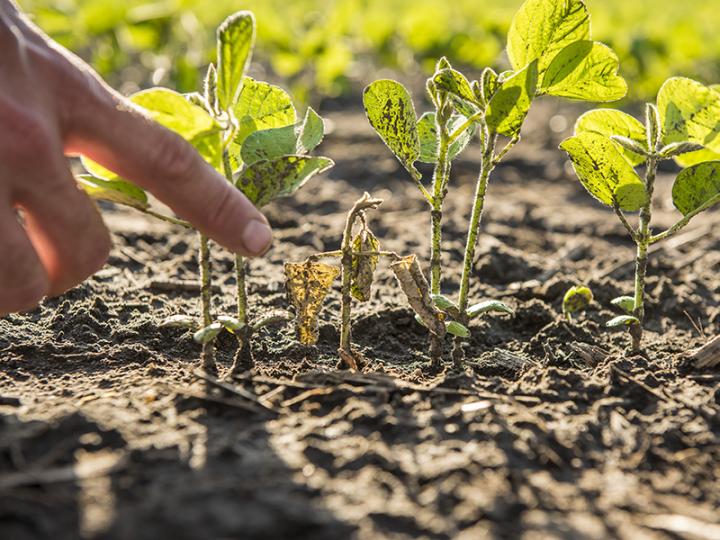To some, farming might seem simple: plant seeds, help them grow, then sell the product. But the reality is much different. Farming requires many complex decisions throughout the year.
One such decision is seeding rate – the number of seeds planted per acre. The best seeding rate for soybean fields is one of the most debated topics for those involved in agriculture.
Researchers have long tried to help farmers find a clear answer. A recent study by soybean scientists at Corteva Agriscience and universities across the U.S. might provide the most complete answer yet. They set out to determine what is called the optimal seeding rate for soybean growers.
“The optimal soybean seeding rate is a commonly discussed topic with many opinions, based on individual experience and regional experiments,” says Adam Gaspar of Corteva Agriscience. “Our study is the largest soybean seeding rate study ever conducted. We hope to provide help to soybean growers based on where they are farming to help reduce risk and optimize yield potential.”
A farmer could plant too little seed and not get maximum production. Or, they could plant too much and not make up the extra money spent. Optimum seeding rate is the ideal amount of seed to use to maximize production and minimize risk.
“Farm margins are very tight,” Gaspar explains. “Growers are looking for ways to most efficiently use resources and control associated expenses, while not unnecessarily increasing their risk. Their seed purchase is a large investment, and one that has big implications. If they don’t get it right, they are putting profitable returns at risk.”
This collaborative research project is the first to determine seeding rates in different environments with low, medium, or high productivity. Medium productivity is average yield with low and high being below or above average. The productivity is influenced by various factors like soil type, topography and climate.
Researchers gathered data on the effects of seeding rate on soybean yield in 12 states plus Ontario, Canada from 2005 to 2007 and 2012 through 2017. The seeding rates, productivity and yield were analyzed.
Overall, the results showed that farmers should increase seeding rates in areas of lower productivity and reduce them in areas of higher productivity. As farmers know, these areas may vary in different parts of the farm. The productivity can even vary within different areas of each field.
Farmers can use this information to guide their decisions regarding how many seeds to plant per acre to maximize yield. Their seeding rate decisions may change from field to field, based on soil type, topography and previous yields. The seeding rate can even be changed within each field using variable rate planter technology.
“These findings will ultimately help growers use the optimal seeding rate between and within each field to optimize production, while limiting their risk of adverse yields due to seeding rates that are too high or too low,” Gaspar says. “Also, it will emphasize the importance of establishing and maintaining an adequate plant stand until harvest. This is especially true in fields or areas of a field with low to medium productivity.”
The work is unique because it brings together so many public and private researchers to share knowledge and resources. This directly helps soybean growers across North America.
“The annual seed purchase is one of the farmers’ larger costs,” says Gaspar. “It is critical for their success to make sure their seeding rate maximizes production and limits their downside risk. Our work will help soybean farmers manage their seed investment by being able to accurately adjust their seeding rates.”
Source: American Society Of Agronomy












